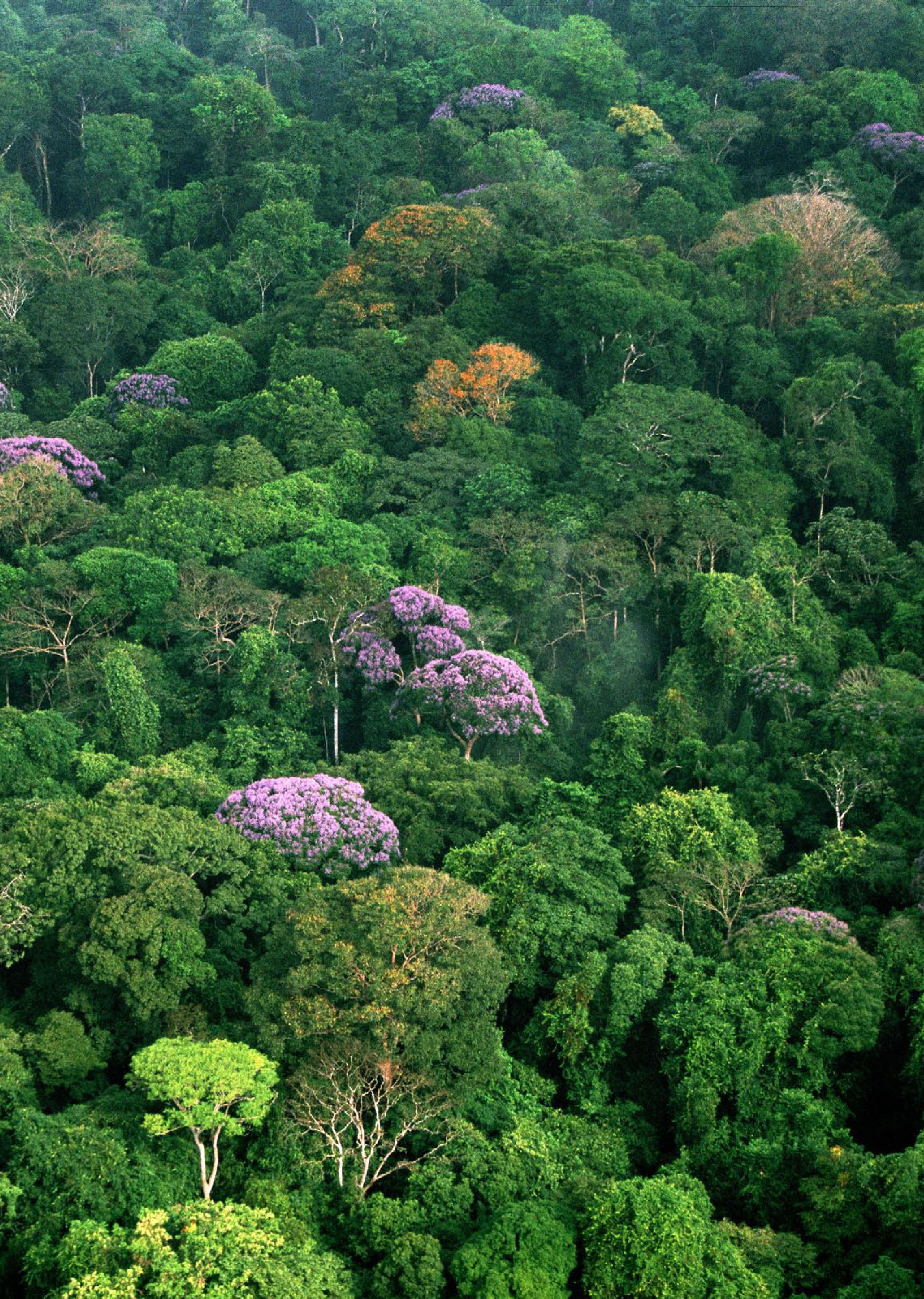The tropical forest canopy, often referred to as the lush upper layer of these vibrant ecosystems, plays a vital role in regulating the Earth’s climate and promoting biodiversity. As the “lungs of the Earth,” tropical forests are crucial for carbon storage, helping to mitigate the effects of climate change. Advanced technologies such as NASA’s Global Ecosystem Dynamics Investigation (GEDI) are now allowing scientists to track the health of these forests in unprecedented detail, including analyzing forest canopy height which indicates overall forest vitality. This study highlights how various environmental factors, from climate stressors to topography, can significantly impact the integrity of the canopy. Understanding these dynamics is essential not just for assessing tropical forest health but also for shaping effective conservation strategies in the face of an increasingly changing climate.
Often described as the green roof of the planet, the tropical forest canopy is a complex and diverse habitat that supports a myriad of life forms while also acting as a significant carbon sink. Researchers are increasingly focusing on this uppermost layer to gauge the health of global forests, particularly in light of findings related to climate change impacts. The innovations brought forth by NASA’s GEDI program enable detailed observations of canopy structure and dynamics, revealing how shifts in climate, such as prolonged dry seasons, affect forest ecosystems across the globe. The exploration of these upper layers is paramount for understanding forest functionality and resilience, informing future conservation efforts and climate action initiatives aimed at preserving these essential environments.
Understanding the Tropical Forest Canopy
The tropical forest canopy represents the uppermost layer of forest ecosystems, formed by mature trees that stretch towards the sky. This canopy acts as a crucial shield for the ecosystem beneath it, influencing both biodiversity and microclimatic conditions. In addition to supporting a vast array of flora and fauna, this layer is vital for evaluating the overall health and productivity of tropical forests. The canopy’s height and density directly correlate with the amount of carbon stored in the forest, making it a significant focus for studies examining climate change effects.
The health of the tropical forest canopy is indicative of a forest’s ability to sequester carbon and support ecological functions. Recent research utilizing NASA’s GEDI technology has provided profound insights into how alterations in climate, including rising temperatures and extended dry seasons, threaten the structural integrity of these canopies. Analyzing factors like forest canopy height gives scientists critical data to assess the health of these crucial environments and their resilience against ongoing climate challenges.
The Role of NASA’s GEDI in Forest Studies
NASA’s Global Ecosystem Dynamics Investigation (GEDI) has revolutionized the way scientists study tropical forests, particularly in understanding canopy structure and dynamics. By deploying advanced LiDAR technology from the International Space Station, researchers can now capture high-resolution measurements of canopy height and density across vast areas. This remote sensing technology overcomes the limitations of traditional field surveys, allowing for a comprehensive view of how tropical forest ecosystems behave under various environmental pressures, including climate change.
The data gathered from GEDI enables researchers to analyze the multitude of factors contributing to variations in forest canopy height. According to recent findings, climate, topography, and soil quality account for a significant portion of differences observed in canopy structure. By understanding these environmental drivers, scientists can better predict the responses of tropical forests to ongoing climate change and identify regions at risk, ensuring that conservation efforts are directed towards the most vulnerable areas.
Impacts of Climate Change on Forests
Climate change poses an imminent threat to global tropical forests, impacting their health and stability. Variations in rainfall patterns and prolonged dry seasons have been identified as major factors influencing forest canopy height, particularly in sensitive regions such as the southern Amazon. As temperatures rise and dry spells become longer, the vulnerability of these ecosystems intensifies, leading to potential reductions in forest structure, biodiversity, and carbon storage capabilities.
Research has shown that the implications of climate change are not uniform across tropical forests. Areas with moist conditions, like the central Amazon, have different resilience factors compared to their drier counterparts. Understanding this disparity is crucial for developing effective conservation strategies that accommodate the specific challenges each forest faces. This knowledge is key for policymakers aiming to prioritize resources and efforts to mitigate the severe impacts of climate change on these vital ecosystems.
Tropical Forests as Global Carbon Stores
Tropical forests play a pivotal role in the global carbon cycle, serving as crucial carbon sinks that help mitigate climate change. By storing vast amounts of carbon in their biomass, these forests help to offset greenhouse gas emissions. Recent studies emphasize that taller canopies are typically associated with higher carbon storage capacity, making the preservation of these structures imperative for enhancing global carbon sequestration efforts.
Moreover, as the health of the tropical forest canopy is compromised by factors like climate change, their ability to store carbon diminishes. Understanding how environmental conditions influence canopy height can inform strategies for conservation and management, ensuring that the world’s tropical forests continue to function effectively in carbon storage and climate regulation. Such strategies will be essential for combating climate change on a global scale.
Assessing Tropical Forest Health Indicators
Tropical forest health is often assessed through a variety of indicators, with canopy height being one of the most significant. Taller canopies not only signify greater biomass and carbon storage but also reflect the overall vitality of the forest ecosystem. Research utilizing NASA’s GEDI technology has shed light on how different ecological and climatic factors impact the height of these canopies, offering critical insight into forest health and resilience.
In evaluating tropical forest health, researchers also consider aspects like biodiversity and ecosystem productivity. A robust canopy supports a diverse range of species and plays a vital role in nutrient cycling. The health of the tropical forest canopy thus serves as a benchmark for gauging the effectiveness of conservation policies and the need for urgent measures to address environmental threats, particularly those exacerbated by climate change.
Exploring Biodiversity in Tropical Forests
Tropical forests are recognized as biodiversity hotspots, harboring an immense variety of plants and animals. The structure of the forest canopy is critical for maintaining this biodiversity, as it provides habitat and resources for countless species. Understanding the interconnectedness between canopy height and species diversity is essential for conservation efforts, especially in the face of climate change, which poses significant threats to these complex ecosystems.
Research has demonstrated that diverse ecosystems are often more resilient to environmental changes, including climate variations. Preserving the integrity of the forest canopy is therefore crucial in safeguarding biodiversity. By utilizing advanced technologies such as those developed by NASA, scientists can monitor changes in canopy structure and make informed decisions about conservation strategies that protect both the canopy and the diverse life it supports.
The Importance of Height Measurement in Forest Conservation
The measurement of forest canopy height is not merely an academic exercise; it holds significant implications for conservation strategies aimed at mitigating climate change. By utilizing tools like NASA’s GEDI, researchers can identify changes in canopy height over time, providing insights into the health and stability of tropical forests. Such measurements are crucial in assessing the potential impacts of climate change and devising effective intervention strategies.
Monitoring canopy height helps to inform resource management decisions, allowing for targeted conservation efforts that prioritize the most vulnerable areas. Understanding how environmental determinants affect forest structure can lead policymakers to enact science-backed protection measures, ensuring that critical regions remain resilient against the backdrop of a changing climate. This proactive approach is vital to maintaining the ecological balance and carbon storage potential of tropical forests.
Future Directions for Tropical Forest Research
Looking ahead, the future of tropical forest research involves expanding beyond the primary forests to include various forested regions and woodlands worldwide. As climate change continues to evolve, researchers aim to deepen their understanding of how diverse forest types respond to changing environmental conditions. This broadened focus will enhance the overall knowledge base, influencing global policies and conservation actions that address the crucial interplay between climate change and forest health.
Collaboration among scientists, policymakers, and conservationists will be key in driving this research forward, ensuring that findings are translated into actionable strategies. By prioritizing areas based on their vulnerability to climate impacts and their carbon storage potential, the scientific community can offer insights that guide effective conservation measures. Such efforts will be instrumental in safeguarding tropical forests and leveraging their capacity to combat climate change.
Influencing Policy through Tropical Forest Research
The findings from studies on tropical forest canopy height and health hold profound implications for environmental policy. By illustrating the vulnerability of these ecosystems to climate change, researchers can influence policy decisions that prioritize the protection and management of tropical forests. Such efforts directly correlate with initiatives aimed at increasing carbon storage capacity and mitigating the adverse effects of global warming.
Moreover, engaging with policymakers can foster collaborations that enhance public awareness and support for tropical forest conservation. By highlighting the vital role these ecosystems play in carbon sequestration and biodiversity preservation, researchers can encourage protective legislation and funding initiatives that aim to combat the threats posed by climate change. Ultimately, bridging the gap between scientific discovery and policy implementation will be essential in ensuring the long-term survival and health of tropical forests.
Frequently Asked Questions
What role does the tropical forest canopy play in climate change effects?
The tropical forest canopy is vital for mitigating climate change effects, as it acts like the lungs of the Earth by storing carbon. Taller canopies are associated with greater above-ground biomass and carbon storage, which helps regulate temperatures during heat waves and buffers microclimates.
How does NASA GEDI technology enhance our understanding of tropical forest health?
NASA’s GEDI (Global Ecosystem Dynamics Investigation) technology utilizes LiDAR laser measurements from space to assess the vertical structure and health of tropical forest canopies. This advanced monitoring allows researchers to evaluate how climate change impacts canopy height and overall forest vitality on a global scale.
What factors influence tropical forest health and canopy height?
Tropical forest health and canopy height are influenced by several environmental factors, including climate, topography, and soil properties. Recent studies show that elements like dry seasons and solar radiation significantly impact canopy height and overall forest productivity.
Why is carbon storage in the tropical forest canopy important for climate change mitigation?
Carbon storage in the tropical forest canopy is crucial for climate change mitigation as these forests absorb significant amounts of CO2 from the atmosphere. Higher canopy heights correlate with enhanced carbon storage capabilities, making it essential to protect and sustain these ecosystems.
What did the recent study find about the impact of climate change on tropical forest canopy height?
The recent study revealed that climate change leads to significant variations in tropical forest canopy height, particularly due to prolonged dry seasons. Forests in regions like the southern Amazon are especially vulnerable, showing potential for marked reductions in canopy height as climate conditions worsen.
How can understanding tropical forest canopy height assist in conservation efforts?
Understanding tropical forest canopy height is essential for assessing the carbon sequestration potential and conservation value of these ecosystems. By identifying vulnerable areas, policymakers can prioritize conservation strategies to protect tropical forests, which are critical for biodiversity and climate resilience.
What climate variables are the most important for determining tropical forest canopy height?
The most important climate variables influencing tropical forest canopy height include elevation, dry season durations, and solar radiation levels. These factors determine the health and structure of forest canopies, which are essential for understanding ecosystem responses to climate change.
Why is studying the tropical forest canopy essential for future climate-change policies?
Studying the tropical forest canopy is essential for future climate-change policies because these forests are biodiversity hotspots and significant carbon reservoirs. Protecting their health is imperative for effective climate action, as they play a vital role in sequestering carbon and mitigating climate impacts.
| Key Points |
|---|
| Tropical forests are vital for carbon storage, often referred to as Earth’s lungs. |
| NASA’s GEDI technology measures forest canopy height to assess health and climate impact. |
| Taller canopies correlate with higher carbon storage and better ecosystem health. |
| Climate variables like heat, drought, and soil affect canopy height significantly. |
| Southern Amazon forests are particularly vulnerable due to prolonged dry seasons. |
| Understanding canopy height is crucial for carbon sequestration and conservation. |
| Future studies aim to influence climate policy regarding tropical forest conservation. |
Summary
The tropical forest canopy plays a crucial role in the global ecosystem, acting as a significant carbon reservoir essential for mitigating climate change. Recent studies using NASA’s advanced technology have highlighted the delicate health of these canopies, particularly in the face of rising temperatures and prolonged dry seasons. By understanding the factors influencing canopy height, we can better assess their health and guide conservation efforts. Protecting the tropical forest canopy is not just about preserving biodiversity, but also about safeguarding our planet’s future.




